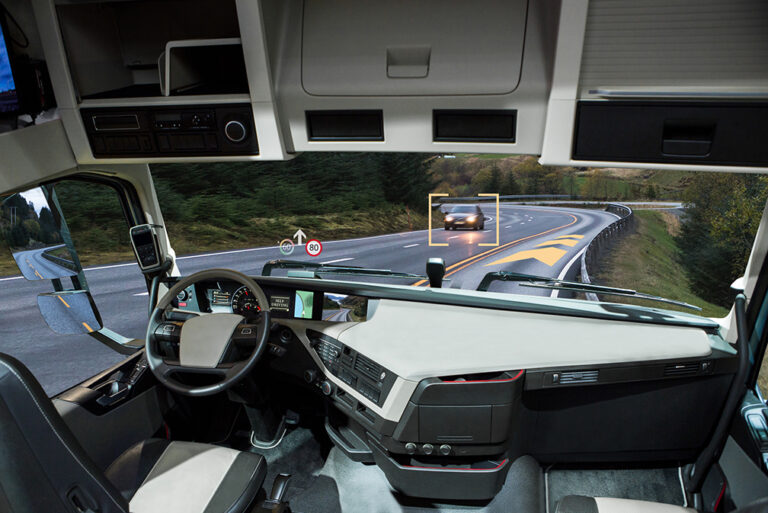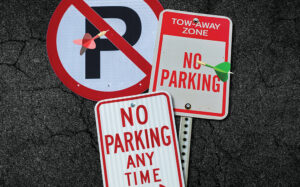Are fully autonomous vehicles safe?
That’s the question on the mind of many as the technology of the future becomes the technology of the present and vehicles with varying levels of autonomy hit America’s roads.
Earlier this year, a report of data gathered by the National Highway Traffic Safety Administration (NHTSA) reported data on crashes involving partially and fully autonomous vehicles.
Of the 130 crashes reported for vehicles equipped with autonomous driving systems (ADS), 108 had no injuries reported — and there was only one serious injury, according to NHTSA data. In most of the crashes, the agency reports, vehicles were struck from the rear.
“We welcome NHTSA’s focus on automated driving technology to ensure its safety benefits are realized,” said Locomation Communications Director Sean Rushton. Locomation is a Pennsylvania-based autonomous vehicle company that’s focused on developing the technology for the trucking industry.
“Building the technology, the right way includes acting transparently,” Rushton noted. “In May 2022, we issued a comprehensive voluntary safety self-assessment of the company’s approach to the safe development and testing of our autonomous trucking technology.”
The NHTSA’s release of crash data for Automated Driving System (ADS) and Advanced Driver Assistance System (ADAS) equipped vehicles underlined the autonomous trucking industry’s strong safety record, according to Kodiak Robotics Head of External Affairs Daniel Goff. Based in Mountain View, California, Kodiak has been working to advance autonomous technology in the trucking industry since 2018.
“In the first 10 months during which NHTSA collected this data, there were only a handful of incidents involving autonomous trucks,” Goff said. “Additionally, as freight carriers, autonomous trucking companies are subject to FMCSA’s (Federal Motor Carrier Safety Administration)crash reporting programs. So, we see the NHTSA crash data record as being positive for the AV trucking industry.”
Goff said the 400 crashes identified by NHTSA include a wide range of technologies, road users, and scenarios.
Rushton and Goff noted that none of the incidents recorded in the NHTSA data involved vehicles equipped with Locomation or Kodiak technology.
“With passenger cars, delivery bots, trucks, advanced driver assistance systems (ADAS), prototype fully-autonomous systems, minor incidents, and more serious collisions all lumped together, the data gives more of a snapshot than a complete picture,” Goff said. “Indeed, of those 400 crashes, only a handful involved autonomous truck developers. Additionally, the data does not speak to who was at fault in those incidents or how frequently these incidents occur compared to total miles driven.”
Improving safety is something that is ongoing for the autonomous transport industry and will be ongoing into the future. Both Locomation and Kodiak continue to keep that development a top priority.
“Locomation differs from fully-driverless autonomous truck companies in the market,” Rushton said. “Fully driverless companies have been trying for years to develop AI that is capable of handling every ‘edge case’ (unforeseen circumstance) and that remains their biggest problem.”
Rushton says Locomation’s approach, with human-guided autonomy, keeps a human driver in the lead of a two-truck convoy, with the second truck following autonomously.
“Our system is a fundamentally safer and more practical approach in the near term,” Rushton said. “It is a commercially viable product that addresses the biggest pain points in trucking such as capacity in the supply chain, truck driver quality of life and safety, and the need to lower carbon emissions.”
Goff stressed the importance of “fallback” systems to help ensure safety when operating an ADAS-equipped truck.
“A big focus in the industry is developing fallback safety systems, which can autonomously pull a self-driving truck over to the side of the road in the event of a truck or system failure,” Goff explained. “The ability to perform a safe, reliable fallback is critical to safely deploying driverless trucks on public roads. Kodiak was the first company to publicly demonstrate our ‘fallback’ system.”
Kodiak has integrated fallback technology from the beginning, Goff said, adding that Kodiak’s self-driving system evaluates the performance of more than 1,000 safety-critical processes and components in both the self-driving technology stack and the underlying truck platform at a speed of 10 times per second.
“These components include both truck-related components such as the engine, oil levels, and tire pressure, as well as autonomous vehicle system components such as sensors and software processes,” he continued. “Should any of these critical components fall outside the acceptable performance parameters, our truck will automatically execute a fallback plan, safely pulling the truck over to the side of the road.”
For example, he said if flying roadway debris were to damage one of the autonomous truck’s sensors, the Kodiak Driver tech would detect the damage and safely pull the truck over.
“The autonomous trucking industry is looking to solve the same risks that all drivers face on the road,” Goff stated. “At Kodiak, we are working to validate our safety case, which will demonstrate that our trucks are safer than human-driven trucks. According to NHTSA, over 5,000 people were killed in crashes involving large trucks in 2019 and the vast majority of those accidents were due to human error. The Kodiak Driver will never text and drive, or drive drunk, distracted, or drowsy. Plus, unlike human drivers, our trucks learn in parallel: when one truck learns something, they all do.”
Goff said another priority for the industry is developing robust plans that determine how driverless vehicles will interact with law enforcement out on the road.
“We are spearheading a lot of the work in this arena for the entire industry because we think having operational codes-of-conduct for autonomous trucks and road safety is critical,” Goff shared. “In furtherance of this work to ensure roadway safety, Kodiak chairs the American Trucking Association Technology and Maintenance Council’s Autonomous Truck Inspections and Enforcement Task Force. Also, we recently hired former California Highway Patrol Assistant Chief Brett Fabbri to help us partner with law enforcement in all 50 states to create safe, simple law enforcement interaction protocols.”
In addition to ushering in a new era of technology for transportation, the 21st century has brought increased concerns about cyber warfare. One thing many people, including professional drivers, have expressed concerned about is potential attacks from hackers, particularly state-sponsored hackers, engaging in cyber-attacks on infrastructure and other aspects of transportation — including autonomous vehicles.
“All levels of both advanced driver assistance and automated driving systems face cyber risks,” Rushton said. “Locomation is designing layers of security protections, system authentication, and plans to conduct rigorous testing to protect and mitigate against unauthorized access and malicious attacks. We have also implemented trusted digital certificates to secure our wireless communication. Furthermore, Locomation is incorporating industry standards to guide our development, testing, and operation.”
According to Locomation, security measures are designed into the base architecture of the trucks by the OEM. In addition, Locomation’s development fleet modifications and ARC system development and testing are done with security in mind.
“As a company of leading software experts, we take the risk of hacking very seriously and have proactively taken many measures to protect our trucks and the roads,” noted Kodiak’s Goff.
Joseph Price has been a journalist for almost two decades. He began in community media in 2005 and has since worked at media outlets in Virginia and Arkansas. He is also a commercial drone pilot and video editor. He hosts a weekly community radio show focused on goth, metal and industrial music that airs Wednesday evenings at 6 p.m. at www.kuhsradio.org.













